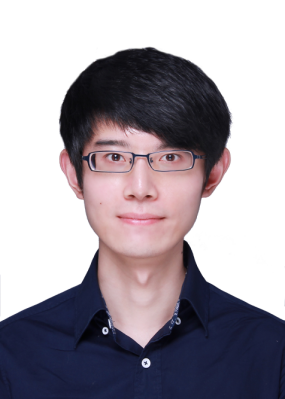供稿单位:互联网 责编:本站编辑 浏览: 0 次

来自internet相关背景文章
A facial recognition system is a computer application for automatically identifying or verifying a person from a digital imageor a video frame from a video source. One of the ways to do this is by comparing selected facial features from the image and a facial database.
It is typically used in security systems and can be compared to other biometrics such as fingerprint or eye iris recognition systems.
Traditional
Some facial recognition algorithms identify faces by extracting landmarks, or features, from an image of the subject's face. For example, an algorithm may analyze the relative position, size, and/or shape of the eyes, nose, cheekbones, and jaw. These features are then used to search for other images with matching features.[2]Other algorithms normalize a gallery of face images and then compress the face data, only saving the data in the image that is useful for face detection. A probe image is then compared with the face data. One of the earliest successful systems is based on template matching techniques applied to a set of salient facial features, providing a sort of compressed face representation.
Recognition algorithms can be divided into two main approaches, geometric, which looks at distinguishing features, or photometric, which is a statistical approach that distill an image into values and comparing the values with templates to eliminate variances.
Popular recognition algorithms include Principal Component Analysis using eigenfaces, Linear Discriminate Analysis, Elastic Bunch Graph Matching using the Fisher face algorithm, the Hidden Markov model, and the neuronal motivated dynamic link matching.
Three Dimensional recognition
A newly emerging trend, claimed to achieve improved accuracies, is three-dimensional face recognition. This technique uses 3D sensors to capture information about the shape of a face. This information is then used to identify distinctive features on the surface of a face, such as the contour of the eye sockets, nose, and chin.
One advantage of 3D facial recognition is that it is not affected by changes in lighting like other techniques. It can also identify a face from a range of viewing angles, including a profile view. Three-dimensional data points from a face vastly improve the precision of facial recognition. 3D research is enhanced by the development of sophisticated sensors that do a better job of capturing 3D face imagery. The sensors work by projecting structured light onto the face. Up to a dozen or more of these image sensors can be placed on the same CMOS chip -- each sensor captures a different part of the spectrum.
Even a perfect 3D matching technique could be sensitive to expressions. For that goal a group at the Technion applied tools from metric geometry to treat expressions as isometries. A company called Vision Access created a firm solution for 3D facial recognition. The company was later acquired by the biometric access companyBioscrypt Inc. which developed a version known as 3D FastPass.
Skin texture analysis
Another emerging trend uses the visual details of the skin, as captured in standard digital or scanned images. This technique, called skin texture analysis, turns the unique lines, patterns, and spots apparent in a person’s skin into a mathematical space.
Tests have shown that with the addition of skin texture analysis, performance in recognizing faces can increase 20 to 25 percent.
Software
Google's Picasa digital image organizer has a built in face recognition system starting from version 3.5 onwards. It can associate faces with persons, so that queries can be run on pictures to return all pictures with a specific group of people together. Picasaweb.com has also been providing a similar feature to its users.
Apple iPhoto, photo organizer distributed with iLife suite of applications includes a system by which people can tag recognized people on photos. Then they can be searched using Spotlight.
Sony's Picture Motion Browser (PMB) analyses photo, associates photos with identical faces so that they can be tagged accordingly, and differentiates between photos with one person, many persons and nobody.
Facebook also included face recognition technology
Windows Live Photo Gallery also included face recognition in last version.
Passage 2 房屋建筑
题目类型 Multiple Choices
Passage 3 PLA 环保材料
题目类型 List of Heading Summary
来自internet相关背景文章
Dressed to dazzle
As high-tech materials invade high-street fashion, prepare for clothes that are cooler than silk and warmer than wool, keep insects at arm's length, and emit many pinpricks of coloured light.
The convergence of fashion and high technology is leading to new kinds of fibres, fabrics and coatings that are imbuing clothing with equally wondrous powers. Corpe Nove, an Italian fashion company, has made a prototype shirt that shortens its sleeves when room temperature rises and can be ironed with a hairdryer. And at Nexia Biotechnologies, a Canadian firm, scientists have caused a stir by manufacturing spider silk from the milk of genetically engineered goats. Not surprisingly, some industry analysts think high-tech materials may soon influence fashion more profoundly than any individual designer.
A big impact is already being made at the molecular level. Nano-Tex, a subsidiary of American textiles maker Burlington, markets a portfolio of nanotechnologies that can make fabrics more durable, comfortable, wrinkle-free and stain-resistant. The notion of this technology posing a threat to the future of the clothing industry clearly does not worry popular fashion outlets such as Gap, Levi Strauss and Lands' End, all of which employ Nano-Tex's products. Meanwhile, Schoeller Textil in Germany, whose clients include famous designers Donna Karan and Polo Ralph Lauren, uses nanotechnology to create fabrics that can store or release heat.
Sensory Perception Technologies (Spn embodies an entirely different application of nanotechnology. Created in 2003 by Quest International, a flavour and fragrance company, and Woolmark, a wool textile organisation, SPT is a new technique of embedding chemicals into fabric. Though not the first of this type, SPT's durability (evidently the microcapsule containing the chemicals can survive up to 30 washes) suggests an interesting future. Designers could incorporate signature scents into their collections. Sportswear could be impregnated with anti-perspirant. Hayfever sufferers might find relief by pulling on a T-shirt, and so on.
The loudest buzz now surrounds polylactic acid (PLA) fibres - and, in particular, one brand-named Ingeo. Developed by Cargill Dow, it is the first man-made fibre derived from a 100% annually renewable resource. This is currently maize (corn), though in theory any fermentable plant material, even potato peelings, can be used. In performance terms, the attraction for the 30-plus clothes makers signed up to use Ingeo lies in its superiority over polyester (which it was designed to replace).
As Philippa Watkins, a textiles specialist, notes, Ingeo is not a visual trend. Unlike nanotechnology, which promises to 'transform what clothes can do, Ingeo's impact on fashion will derive instead from its emphasis on using natural sustainable resources. Could wearing synthetic fabrics made from polluting and non-renewable fossil fuels become as uncool as slipping on a coat made from animal fur? Consumers should expect a much wider choice of 'green' fabrics. Alongside PLA fibres, firms are investigating plants such as bamboo, seaweed, nettles and banana stalks as raw materials for textiles. Soya bean fibre is also gaining ground. Harvested in China and spun in Europe, the fabric is a better absorber and ventilator than silk, and retains heat better than wool.
Elsewhere, fashion houses - among them Ermenegildo Zegna, Paul Smith and DKNY - are combining fashion with electronics. Clunky earlier attempts Involved attaching electronic components to the fabrics after the normal weaving process. But companies such as SOFTswitch have developed electro-conductive fabrics that behave in similar ways to conventional textiles.
Could electronic garments one day change colour or pattern? A hint of what could be achieved is offered by Luminex, a joint venture between Stabio Textile and Caen. Made of woven optical fibres and powered by a small battery, Luminex fabric emits thousands of pinpricks of light, the colour of which can be varied. Costumes made of the fabric wowed audiences at a production of the opera Aida in Washington, DC, last year.
Yet this ultimate of ambitions has remained elusive in daily fashion, largely because electronic textiles capable of such wizardry are still too fragile to wear. Margaret Orth, whose firm International Fashion Machines makes a colour-changing fabric, believes the capability is a decade or two away. Accessories with this chameleon-like capacity - for instance, a handbag that alters its colour - are more likely to appear first.
课程推荐
| 课程名称 | 上课地点 | 上课时间 | 查看课程 |
| 雅思预备VIP8人班 | 词汇量在3500左右英语基础较好,或雅思已考4分的学生 | / | 查看 |
| 雅思强化VIP8人班 | 大学英语四级以上,雅思已考5分或同等水平的学生 | / | 查看 |
| 雅思冲刺VIP8人班 | 英语四级550以上,或雅思已考6分同等英语水平的学生 | / | 查看 |
| 雅思基础VIP8人班 | 英语四级左右水平,雅思已考4.5或同等英语水平的学生 | / | 查看 |
| 雅思突破VIP8人班 | 英语四级以上,或雅思已考5分同等水平学生 | / | 查看 |
| 雅思6分精品班 | 大学英语四级以上,雅思已考5分或同等水平的学生 | / | 查看 |
| 雅思6分基础班 | 大学英语四级以上,雅思已考5分或同等水平的学生 | / | 查看 |
| 雅思6分突破班 | 大学英语四级以上,雅思已考5分或同等英语水平学生 | / | 查看 |
| 雅思6.5分铂金班 | 大学英语六级480分以上,雅思已考6分同等水平的学生 | / | 查看 |
| 雅思6.5分精品班 | 大学英语六级480分以上,雅思已考6分同等水平学生 | / | 查看 |
| 雅思强化住宿VIP8人班 | 大学英语四级450分以上,雅思已考5分或同等水平学生 | / | 查看 |
| 雅思精讲住宿VIP8人班 | 基础一般词汇量在3500左右,或雅思4.5分同等水平学生 | / | 查看 |
| 雅思基础住宿VIP8人班 | 基础一般词汇量在3500左右,或雅思4.5分同等水平学生 | / | 查看 |

热门文章
- 哪个机构的雅思封闭班呢?12/14
- 雅思培训哪家好?价格多少钱呢?12/14
- 雅思7分及以上能申请哪些英国大学?12/12
- 雅思外教培训多少钱?影响收费的要素有...12/11
- 雅思学习有何方法呢?怎么才能打破雅...12/11
- 2019年3月2日雅思听力预测02/26
- 2019年2月14日雅思听力考试回忆02/25
- 雅思听力怎么进行自学复习备考?02/17
- 雅思听力记笔记技巧02/13
- 雅思三大听力场景词汇总结02/12
- 2019年3月2日雅思口语预测02/26
- 2019年2月16日雅思口语考试回忆02/25
- 雅思口语技巧的黄金法则02/17
- 雅思听力泛听重点听的内容01/10
- 雅思听力如何备考才能拿到高分呢?01/10
- 2019年3月2日雅思阅读预测02/19
- 2019年3月2日雅思阅读预测02/19
- 2019年2月16日雅思阅读考试回忆02/25
- 雅思阅读做题速度慢的原因01/13
- 雅思阅读考试题型的特点01/10
- 长沙新航道三步教你写好雅思大作文05/17
- 2019年3月2日雅思写作预测02/26
- 2019年2月16日雅思写作考试回忆02/18
- 雅思写作备考事项有哪些?02/17
- 雅思写作典型误区分析02/17








